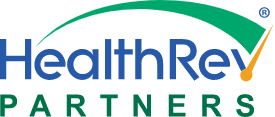
Accurate, patient-specific coding is imperative to success with the Patient-Driven Groupings Model or PDGM. By ensuring your diagnosis coding is correct, you will ensure proper payment while addressing the clinical needs of your patients. Let’s look at how accurate diagnosis coding affects your reimbursement.
Under PDGM, 30-day periods are placed into subgroups for each of these categories:
- Admission source | Subgroups: community or institutional admission source
- Timing of the 30-day period | Subgroups: early or late
- Clinical grouping | Subgroups: musculoskeletal rehabilitation; neuro/stroke rehabilitation; wounds; medication management, teaching, and assessment (MMTA) – surgical aftercare; MMTA – cardiac and circulatory; MMTA – endocrine; MMTA – gastrointestinal tract and genitourinary system; MMTA – infectious disease, neoplasms, and blood-forming diseases; MMTA – respiratory; MMTA- other; behavioral health; or complex nursing interventions
- Functional impairment level | Subgroups: low, medium, or high
- Comorbidity adjustment | Subgroups: none, low, or high based on secondary diagnoses.
Of these, the clinical grouping and comorbidity adjustment categories are directly related to diagnosis coding.
Clinical Grouping
Each 30-day period is grouped into one of twelve clinical groups based on principal diagnosis:
- Musculoskeletal Rehabilitation
- Wounds – Post-Op Wound Aftercare and Skin/Non-Surgical Wound Care
- Complex Nursing Interventions
- Behavioral Health Care
- MMTA – Surgical Aftercare
- MMTA – Cardiac/Circulatory
- MMTA – Endocrine
- MMTA – GI/GU
- MMTA – Infectious Disease/Neoplasms/Blood-Forming Diseases
- MMTA – Respiratory
- MMTA – Other
The primary diagnosis helps to describe the main reason why a patient is receiving home health services and determines the clinical grouping for each 30-day period. If the primary diagnosis doesn’t fit into one of the 12 clinical groups, it’s considered an “Unacceptable Diagnosis” (formerly “Questionable Encounters”). According to CMS, that means that the patient’s diagnosis isn’t appropriate for home health services reimbursed by Medicare. If you submit a claim with a “UD,” your claim will be “returned to provider” (RTP), resulting in payment delay and possible cash flow interruptions.
Comorbidity Adjustment
Depending on the secondary diagnosis, a 30-day period will receive a no, low, or high comorbidity adjustment.
- No comorbidity adjustment: There are no reported secondary diagnoses associated with higher resource use
- Low comorbidity adjustment: There’s a reported secondary diagnosis associated with higher resource use
- High comorbidity adjustment: There are two or more secondary diagnoses associated with higher resource use when reported together
Only one comorbidity adjustment is allowed in a 30-day period. Of the comorbidity subgroups, 12 are assigned as “low” adjustment and 34 are assigned as “high” adjustment.
Tips for Successful Diagnosis Coding
- Be familiar with acceptable primary diagnosis codes. Review the list of ICD–10–CM codes and their assigned clinical groupings. Don’t forget that symptom codes and unspecific codes are not acceptable as primary codes.
- Be sure to follow ICD-10 guidelines for sequencing. Put diagnoses in the order that best reflects the patient’s condition and necessity of services.
- Educate both your intake staff and referral sources on the need for specificity when it comes to diagnoses. Be prepared to follow up if the information you need isn’t provided. Don’t send in the claim anyway and simply hope that it doesn’t come back!
- Take advantage of coding experts who have extensive knowledge about PDGM. They’ll quickly identify any issues with the primary diagnosis code, allowing you to make changes before it’s too late.
- Check out our PDGM Resources page for expert resources designed to help you succeed.
Struggling with your home health coding? We can help!
At HealthRev Partners, our certified home health coding experts have the skills needed to accurately code under PDGM with rapid turnaround. When you partner with us, you’ll benefit from reduced documentation errors and expedited claims submission, resulting in streamlined cash flow and stronger financial performance. To learn about our no long-term obligation trial period, contact us today.


